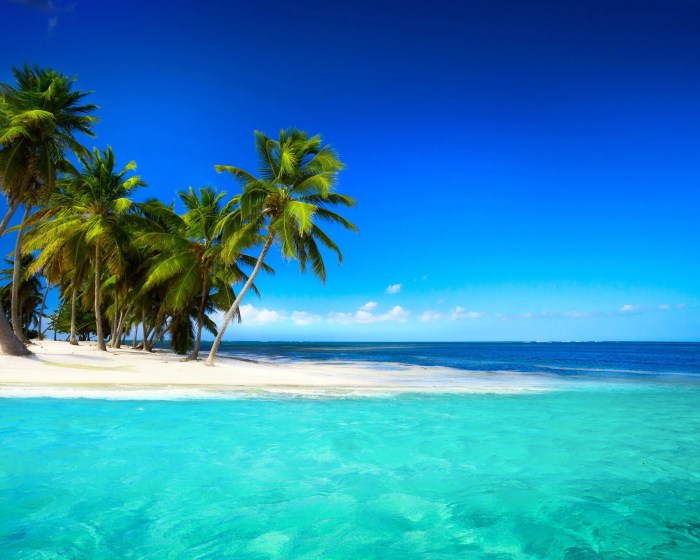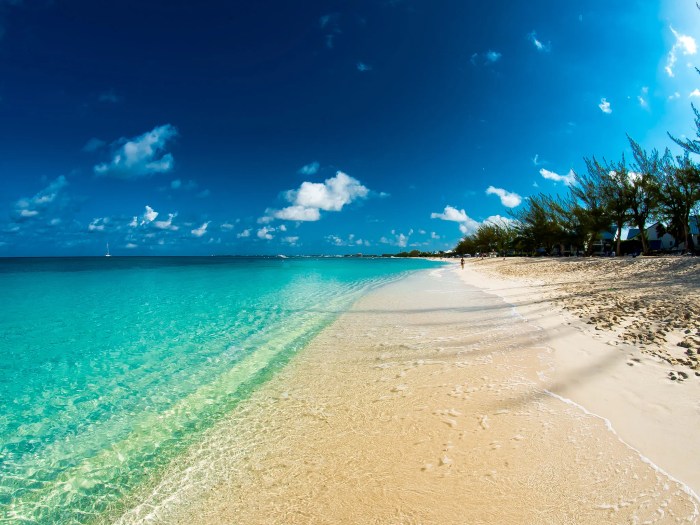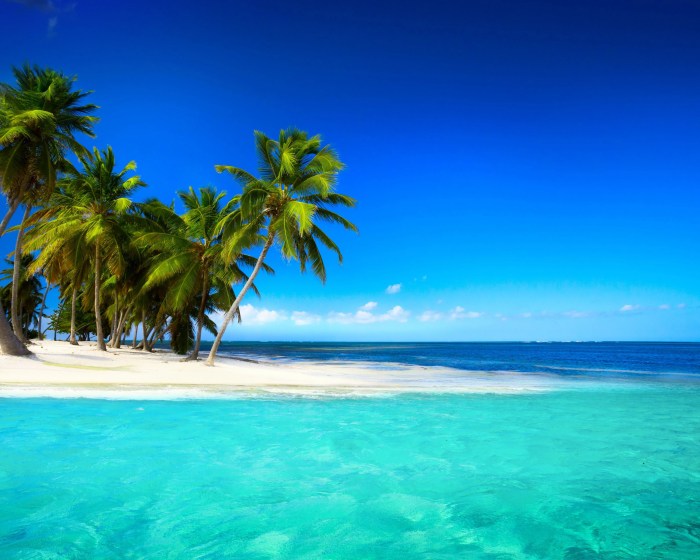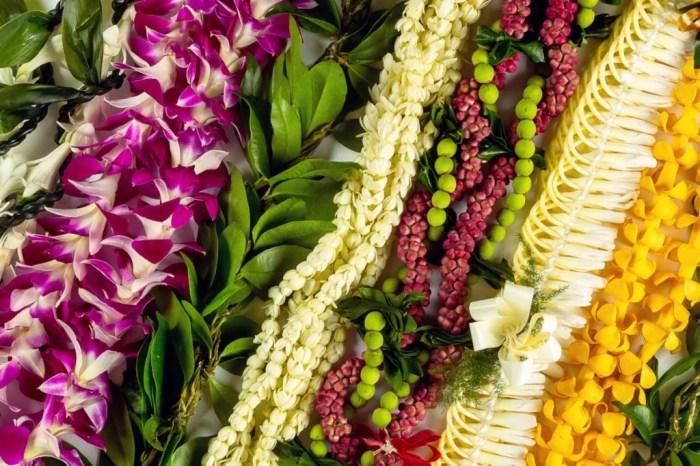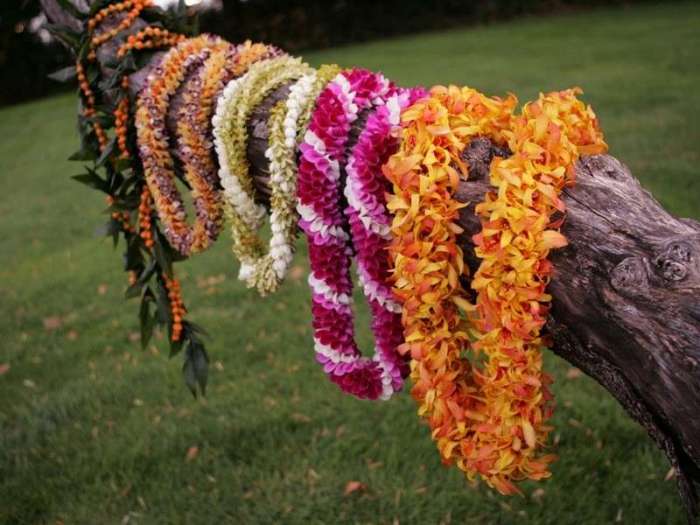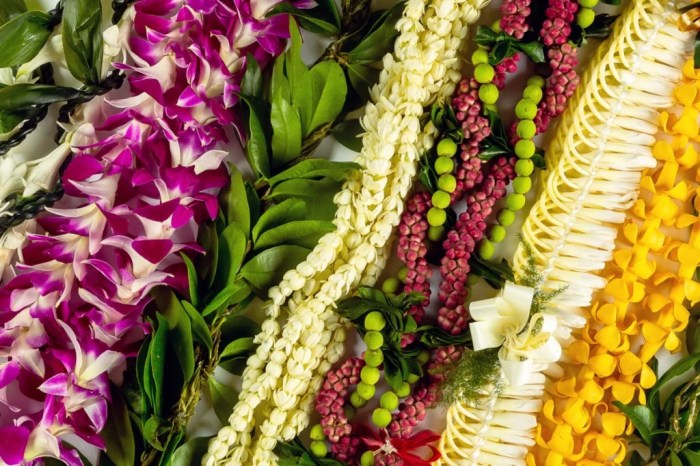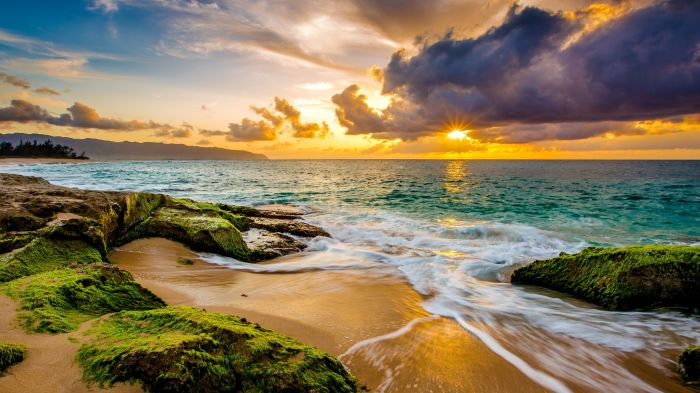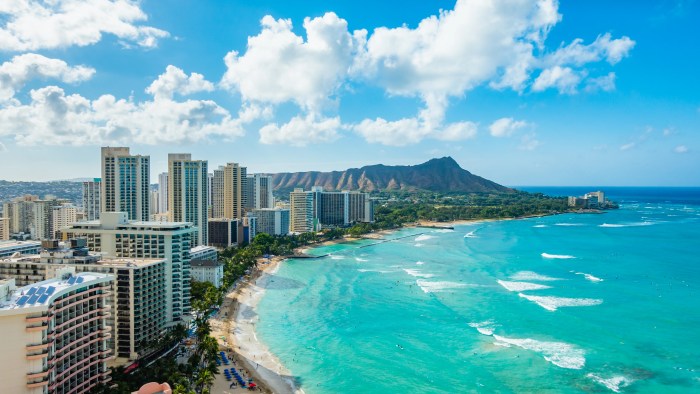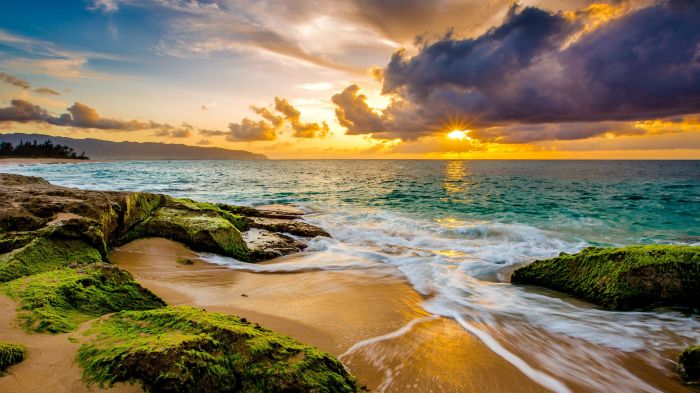Trip ideas Disney vacations Disney Aulani: Dreaming of a magical Disney getaway? This guide dives deep into planning unforgettable experiences at the enchanting Aulani resort in Hawaii, alongside other Disney destinations. We’ll explore everything from family-friendly fun to romantic escapes, special events, and personalized trip customization. Whether you’re seeking a thrilling adventure or a relaxing retreat, we’ll equip you with the knowledge and inspiration to create your perfect Disney vacation.
From the bustling theme parks of Orlando to the serene shores of Aulani, Disney destinations offer a wide range of experiences. This comprehensive resource will break down the unique aspects of each location, considering factors like budget, age appropriateness, and interests. We’ll provide actionable tips for planning your dream trip, including essential steps, budgeting strategies, and accommodation choices.
Introduction to Disney Destinations
Disney destinations offer a magical array of experiences, catering to diverse interests and budgets. From the classic charm of Disneyland to the sprawling wonder of Walt Disney World, each park boasts unique attractions and immersive environments. Aulani, Disney’s Polynesian-themed resort, provides a tropical escape with a focus on relaxation and cultural immersion. This exploration will delve into the specifics of each destination, considering their attractions, suitability for various age groups, and estimated costs.This detailed overview aims to provide a comprehensive understanding of the different Disney experiences, allowing potential visitors to make informed decisions based on their preferences and resources.
By understanding the offerings, target audiences, and pricing structures of each destination, visitors can plan a trip that perfectly aligns with their expectations and budget.
Disney Destination Overview
Disney destinations cater to a wide range of interests and budgets. The experiences differ significantly, offering something for every family. The table below summarizes the key features, target audiences, and estimated costs for each location.
| Destination | Key Features | Target Audience | Estimated Cost (per person, approximate, for a 5-day trip, including accommodation) |
|---|---|---|---|
| Disneyland Park (California) | Classic Disney magic, smaller scale than Walt Disney World, iconic attractions like Sleeping Beauty Castle, and a focus on classic Disney characters and stories. | Families with younger children, Disney enthusiasts, couples seeking a romantic getaway. | $1,500 – $3,000 |
| Walt Disney World (Florida) | Largest Disney resort, sprawling parks with diverse attractions, themed lands like Hollywood Studios and Animal Kingdom, extensive resort options. Offers more diverse experiences than Disneyland. | Families of all sizes, Disney enthusiasts, those seeking a longer, more comprehensive Disney experience. | $2,500 – $5,000+ |
| Aulani, a Disney Resort & Spa (Hawaii) | Unique Polynesian-themed resort, emphasizing relaxation and cultural immersion. Offers a distinct experience from other Disney destinations, featuring stunning beaches, lush landscapes, and cultural activities. | Families seeking a tropical vacation, couples looking for a relaxing getaway, those wanting a different cultural experience within a Disney framework. | $2,000 – $4,000+ |
Factors Influencing Trip Cost
Several factors contribute to the overall cost of a Disney trip. These include the duration of the stay, the chosen accommodation, dining choices, park tickets, and potential extras like character meet-and-greets or special events. Consideration of these factors helps in establishing a realistic budget. For instance, staying in a value resort at Walt Disney World will typically be less expensive than a deluxe resort, but also may not include the same level of amenities.
Age Appropriateness and Interests
The age appropriateness of a Disney destination varies considerably. Disneyland generally caters to a younger audience, while Walt Disney World offers more diverse experiences for different age groups. Aulani’s focus on relaxation and cultural immersion makes it suitable for families with older children or couples seeking a more mature vacation. Specific attractions and experiences within each park are designed with different age groups and interests in mind.
Planning a Disney Trip
Dreaming of a magical Disney vacation? The journey from initial spark to final booking requires careful planning. This isn’t just about picking dates; it’s about crafting an experience tailored to your family’s needs and budget. Thorough research and thoughtful decisions are key to making your Disney dream a reality.Planning a Disney trip involves more than just selecting a destination.
It’s a process that encompasses budgeting, researching activities, and meticulously considering travel logistics. Understanding the nuances of each step ensures a smooth and enjoyable experience for everyone involved. Careful consideration of accommodation options is also critical for maximizing your vacation time and minimizing stress.
Budgeting for Your Disney Adventure
A crucial first step is establishing a realistic budget. Disney vacations can range from affordable to extravagant, depending on your choices. Factor in airfare, park tickets, meals, souvenirs, and potential extra activities. Creating a detailed spreadsheet or using dedicated budgeting tools can help visualize your spending. Consider using a travel rewards credit card for potential savings on flights or accommodation.
This proactive approach allows you to anticipate and prepare for expenses, ensuring you can enjoy the magic without financial strain.
Researching Disney Activities and Experiences
Disney destinations offer a wide array of activities and experiences. Thorough research into attractions, shows, parades, and character meet-and-greets is essential. Knowing what interests your family allows you to prioritize experiences and allocate time effectively. This research ensures you’re prepared for queues, and you can make informed decisions about scheduling. Checking park hours and show times in advance can prevent disappointment.
Also, consider booking character dining experiences or special events in advance to avoid disappointment.
Considering Travel Logistics, Trip ideas disney vacations disney aulani
Travel logistics play a vital role in a smooth Disney trip. Plan your transportation to and from the destination, factoring in travel time, potential delays, and parking fees at the airport or park. If you’re traveling with children, consider their needs and adjust your travel schedule accordingly. If you have any dietary restrictions or medical conditions, be sure to factor them into your planning.
Arranging travel insurance is also a prudent step to safeguard against unexpected events. Consider carpooling, ride-sharing services, or even renting a car for flexibility.
Choosing Your Disney Accommodation
Selecting the perfect accommodation is a significant part of your planning. On-site resorts offer convenience and proximity to the parks, but they often come with higher prices. Nearby hotels provide a range of options, offering varying levels of comfort and proximity to the park, along with a broader budget range. Consider factors such as the size and amenities of the accommodations, as well as their location relative to the parks.
Read reviews from previous guests to gain insights into their experiences with different options. Also, consider the types of amenities offered, like pools, restaurants, and activities. Compare prices and availability for various accommodation types, from budget-friendly options to luxury suites. Comparing different resorts and hotels side-by-side in a table format can help visualize the differences in amenities and costs.
| Accommodation Type | Pros | Cons | Example |
|---|---|---|---|
| On-site Resort | Proximity to parks, amenities | Higher cost, limited options for non-Disney themed lodging | Disney’s Polynesian Village Resort |
| Nearby Hotel | Wider range of options, potential lower cost | Longer travel time to parks, less integrated amenities | Various hotels near the parks |
Aulani: A Hawaiian Paradise
Aulani Resort, a Disney property nestled on the shores of Ko Olina, Oahu, offers a unique and enchanting experience. Beyond the familiar Disney magic, Aulani embraces the rich culture and natural beauty of Hawaii, creating a distinct atmosphere that sets it apart from other Disney destinations. It’s a place where guests can immerse themselves in Hawaiian traditions and reconnect with nature, alongside the classic Disney experiences.Aulani transcends the typical Disney resort model, offering a deeper connection to the Hawaiian Islands.
This is achieved through meticulous attention to detail, showcasing Hawaiian artistry, and incorporating local customs into every aspect of the resort. Guests are welcomed into a cultural tapestry woven into the very fabric of the resort, from the architecture to the hospitality.
Cultural Immersion
Aulani’s commitment to cultural immersion is evident in its architecture, which draws inspiration from traditional Hawaiian structures. The resort’s landscaping reflects the beauty of the Hawaiian islands, and the resort is designed to feel like a traditional Hawaiian village. The staff members are often knowledgeable about Hawaiian traditions and are eager to share their insights with guests.
Hawaiian-Themed Activities
A wide array of activities allows guests to engage with the local culture. Hula lessons, lei-making workshops, and storytelling sessions offer opportunities to learn about Hawaiian customs and traditions. The resort also hosts various events and celebrations that celebrate Hawaiian culture throughout the year. Furthermore, the resort’s proximity to stunning natural attractions, such as beaches and lush valleys, allows for exploration of the surrounding beauty.
Unique Food Experiences
Aulani’s culinary offerings reflect the bounty of the Hawaiian Islands. Guests can savor fresh seafood, local fruits, and traditional Hawaiian dishes. The resort’s restaurants offer an array of flavors and experiences, from casual beachside dining to elegant fine-dining experiences. Special menus and events often showcase the creativity of Hawaiian chefs and the fresh, seasonal ingredients of the islands.
Aulani Compared to Other Disney Resorts
| Feature | Aulani | Other Disney Resorts |
|---|---|---|
| Atmosphere | Relaxed, culturally immersive, and deeply connected to the Hawaiian environment. | Generally more focused on the classic Disney theme, with variations based on the specific location. |
| Activities | Hula lessons, lei-making, storytelling, and exploration of the local environment. | More varied, depending on the location, often including themed parks and shows. |
| Cuisine | Focus on fresh, local ingredients, showcasing Hawaiian culinary traditions. | Generally, a wider range of international cuisines and themed food experiences. |
Family Trip Ideas
Planning a family trip to Disney Destinations requires careful consideration of everyone’s interests and age. Successfully navigating these trips involves understanding the diverse experiences each park offers and the unique challenges and advantages of each location. This section provides insights into selecting activities appropriate for various ages and budgets, while highlighting strategies for balancing everyone’s enjoyment.Balancing the diverse needs and interests of family members is crucial for a positive experience.
This includes understanding the potential challenges and advantages of different locations, along with tailoring activities to specific age groups. Flexibility and open communication are essential for adapting to unexpected situations and ensuring everyone feels included.
Dreaming of Disney vacations, especially at the enchanting Aulani? For a spooky Halloween getaway, consider destinations known for their festive atmosphere, like those listed in the guide for holiday travel halloween best places to visit for. But if you’re aiming for a family-friendly Disney experience, Aulani offers a unique Polynesian charm, perfect for magical memories and creating unforgettable experiences for everyone.
Aulani’s tropical beauty is the ideal setting for a fantastic holiday.
Family Activities at Disney Destinations
Disney destinations offer a plethora of activities suitable for families with children of all ages. Careful planning is key to ensuring everyone enjoys the trip.
- Magic Kingdom (Walt Disney World): This park is perfect for younger children, with classic attractions like “it’s a small world,” “Peter Pan’s Flight,” and “The Haunted Mansion.” The Fantasyland section is especially popular with younger kids, offering gentle rides and interactive experiences. Older children might find the more thrilling rides in Adventureland and Frontierland appealing. A potential challenge is the sheer size and crowds, requiring careful management of time and energy.
A benefit is the wide range of family-friendly shows and parades, adding to the overall experience.
- Animal Kingdom (Walt Disney World): This park appeals to families interested in animals and nature. Experiences like the Kilimanjaro Safaris, the Pandora – The World of Avatar area, and the numerous animal encounters offer engaging and educational opportunities. Younger children might find the animal encounters and quieter areas more appealing, while older children will likely appreciate the more adventurous elements. The park’s natural beauty offers opportunities for relaxation and peaceful moments.
Potential challenges could include the heat and humidity, especially during peak season. The advantage lies in the immersive and educational nature of the park, offering a unique experience beyond typical theme park attractions.
- Epcot (Walt Disney World): Epcot offers a unique blend of cultures and pavilions, with opportunities for exploration and learning. The World Showcase provides a chance to experience different cuisines and traditions, making it suitable for families interested in global culture. The Spaceship Earth attraction can be a hit with older children. However, the vastness of Epcot can be overwhelming, and the pace of the park may not suit all ages.
The diverse food and beverage options are a key benefit for families.
- Disneyland Park (California): Similar to Magic Kingdom, Disneyland offers a classic and beloved experience with a focus on classic stories and characters. The “it’s a small world” ride, “Haunted Mansion”, and “Pirates of the Caribbean” are popular choices for younger children. Older children may enjoy the thrilling attractions, such as the “Indiana Jones Adventure” and “Space Mountain.” The more condensed size of Disneyland Park is a plus, allowing for more efficient exploration.
Planning a Disney Aulani vacation? It’s a fantastic trip idea, and while you’re dreaming of tropical escapes, did you know some cities you might think are capitals aren’t? For example, exploring the fascinating list of famous cities you thought were capitals but aren’t ( famous cities you thought were capitals but aren’t ) might spark some interesting research while you’re booking your flights and accommodations.
Ultimately, the perfect Disney Aulani vacation awaits!
The park’s location in Southern California provides opportunities for exploring nearby attractions as well.
- Aulani, a Disney Resort & Spa (Hawaii): This resort offers a unique blend of relaxation and family fun. The resort’s emphasis on Hawaiian culture and natural beauty makes it a relaxing and refreshing choice. Activities like the luau, swimming, and beach time are perfect for families seeking a more laid-back vacation. Potential challenges might include the cost of accommodations and the need for transportation to explore beyond the resort.
The advantages include a focus on relaxation and immersion in a beautiful natural environment.
Budget Considerations for Family Trips
The cost of a Disney vacation can vary significantly based on the chosen destination, length of stay, and desired level of luxury. Careful planning and budgeting are essential for a smooth and enjoyable experience.
- Accommodation: Disney resorts offer various options, from basic to luxurious. Consider factors like location, amenities, and meal plans when making your choice.
- Park Tickets: Park tickets are an important expense. Consider the number of days you plan to spend at each park and the potential need for park hopper tickets.
- Food and Beverages: Dining at Disney locations can range from quick service to table service. Plan for your meals in advance and consider options for saving money, like quick-service restaurants or packing snacks.
- Souvenirs: Souvenirs can quickly add up. Establish a budget for souvenirs before the trip to avoid overspending.
Balancing Family Interests
Successfully balancing the interests of all family members is key to a positive experience.
- Open Communication: Encourage open communication and discussion among family members to understand each person’s expectations and desires.
- Flexibility: Be prepared to adjust plans as needed. Allow for downtime and flexibility to accommodate changing interests.
- Designated Time: Allocate specific time for activities that appeal to different members of the family.
Romantic Getaways: Trip Ideas Disney Vacations Disney Aulani
Finding the perfect romantic getaway can be a thrilling adventure. Disney destinations offer unique opportunities to create unforgettable memories for couples, whether it’s a surprise trip or a planned celebration. From enchanting dining experiences to special event planning, Disney parks provide a magical backdrop for romance. This exploration dives into romantic activities, considering different destinations and the potential costs involved.Couples seeking a romantic escape often turn to Disney destinations for their enchanting atmosphere and unique experiences.
The meticulously crafted environments, coupled with the opportunity to personalize the trip, make these locations ideal for couples looking for an extraordinary experience. This section will focus on the specifics of planning romantic getaways, exploring the unique aspects of different parks, and discussing potential cost factors.
Romantic Dining Experiences
Dining experiences at Disney destinations are more than just meals; they are carefully curated events. Consider character dining, where you can share a meal with beloved Disney characters, creating a memorable and engaging atmosphere. Alternatively, themed restaurants immerse you in a particular world, offering unique cuisine and décor. Many restaurants offer special prix fixe menus, or you can explore signature restaurants with exceptional culinary offerings.
This allows for a more intimate and focused dining experience. For example, a reservation at Be Our Guest Restaurant at Magic Kingdom offers a whimsical and sophisticated dining experience that can be highly romantic.
Special Event Planning
Creating a special event can elevate your romantic Disney experience. Consider a private dining experience or a surprise celebration. The Disney parks’ event planning services can help create customized experiences, including floral arrangements, special lighting, and personalized touches. A dedicated Disney planner can ensure the seamless execution of your vision, ensuring your special event is unforgettable. For example, arranging a surprise proposal at a secluded spot in the park, with a beautifully set table and champagne, is a highly romantic and personal experience.
Memorable Moments
Creating lasting memories involves thoughtful planning and consideration of details. Consider a private photo session, capturing the magic of the park. Special fireworks displays can be a perfect way to end the evening, creating a breathtaking spectacle for you and your loved one. For instance, a romantic gondola ride in the evening, followed by a fireworks display, is a memorable and unforgettable moment.
Planning a Disney vacation, especially at Aulani, is always exciting. But if you’re looking for something a little different and quirky, consider checking out the Good Omens Secret Experience in London. It sounds like a fascinating journey into the world of the book, and a unique experience for the whole family. Once you’ve had your fill of that, you can still enjoy a relaxing and magical Disney Aulani trip! good omens secret experience london I’m sure it’ll be a memorable detour from the usual.
Romantic Activities by Location
| Destination | Unique Setting | Potential Activities | Estimated Cost (per couple) |
|---|---|---|---|
| Magic Kingdom (Orlando) | Fairytale atmosphere | Character dining, fireworks, rides, private photo session | $500-$1500 |
| Disneyland (California) | Classic charm | Special dining, parade viewing, rides, picnics | $400-$1200 |
| Aulani (Hawaii) | Tropical paradise | Luau, beach walks, sunset cocktails, spa treatments | $800-$2000 |
| Tokyo Disney Resort | Asian influences | Traditional tea ceremonies, cultural shows, themed dining | $600-$1800 |
Note: Costs are estimates and can vary based on the specific choices and time of year.
Advantages and Disadvantages of Different Destinations
Choosing a destination for a romantic getaway involves weighing advantages and disadvantages. Aulani, with its tropical ambiance, offers a relaxing and intimate atmosphere, ideal for couples seeking a secluded retreat. However, the experience may be less stimulating than a bustling park like Magic Kingdom. Magic Kingdom, on the other hand, offers a wide array of experiences and attractions, but the sheer size and crowds can sometimes detract from intimacy.
Disneyland provides a classic charm, while Tokyo Disney Resort immerses you in a unique cultural experience. Carefully consider your priorities and preferences to select the most suitable destination.
Special Events and Celebrations
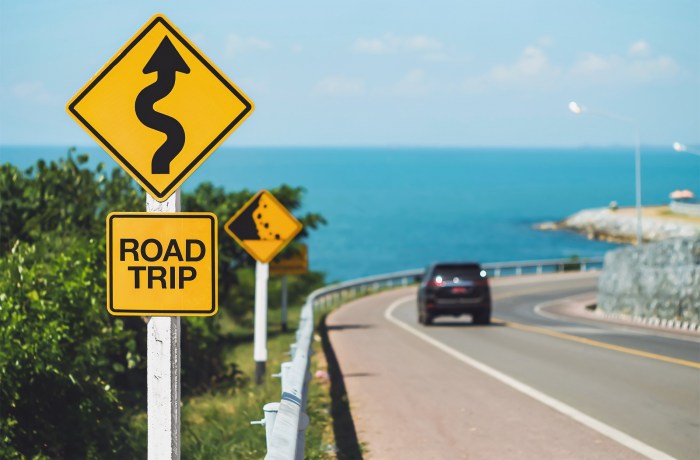
Disney destinations offer a plethora of special events and celebrations throughout the year, transforming parks into vibrant displays of holiday cheer, cultural festivals, and themed celebrations. These events often feature unique decorations, entertainment, and food offerings, adding an extra layer of magic and excitement to your vacation. Understanding the booking process and potential costs can help you plan strategically and maximize your enjoyment.These special events are meticulously planned and executed to enhance the overall experience for guests.
They often incorporate unique elements, such as festive decorations, themed entertainment, and specially crafted food and beverage options. Understanding the details of these events, including booking procedures and cost implications, is essential for planning a truly memorable Disney experience.
Holiday Celebrations
Holiday celebrations at Disney destinations are a popular choice for families and offer a unique opportunity to immerse yourselves in the spirit of the season. From elaborate Christmas decorations to dazzling New Year’s Eve fireworks, the parks are transformed into winter wonderlands.
- Christmas Decorations: Expect elaborate Christmas trees, festive lighting displays, and themed decorations throughout the parks. Imagine towering Christmas trees adorned with thousands of twinkling lights, transforming the landscape into a magical winter wonderland. Many locations also feature interactive displays, such as gingerbread houses or holiday-themed photo opportunities.
- Seasonal Entertainment: Holiday shows, parades, and character meet-and-greets are often scheduled during these celebrations. Expect festive music, dazzling costumes, and beloved Disney characters in holiday attire. For example, the “Mickey’s Very Merry Christmas Party” at Magic Kingdom features special nighttime entertainment, including a spectacular fireworks show.
- Special Food Offerings: Holiday-themed treats and beverages are a staple of these celebrations. From gingerbread cookies and hot cocoa to seasonal desserts and holiday-themed snacks, these unique food offerings are a delightful part of the experience. For example, many restaurants offer special holiday menus featuring seasonal ingredients and festive flavors.
Booking Procedures and Requirements
Booking for special events often requires advance planning and may have specific requirements. Early booking is highly recommended, especially for popular events and during peak seasons. Specific booking procedures and requirements will vary depending on the event and destination.
- Advance Booking: For many special events, advance booking is required and often necessary to secure your spot. Be prepared to book tickets and make dining reservations well in advance of your trip.
- Park Reservations: Park reservations might be needed to participate in specific events. Always check the official Disney website for specific details on event-related park reservations.
- Ticket Requirements: Some events may require specific event tickets or park hopper options, in addition to park entry. It is crucial to verify ticket requirements and purchase necessary tickets well in advance.
Cost Implications
Attending special events typically involves additional costs beyond the standard park admission. These costs can vary based on the event and may include event tickets, special dining experiences, or merchandise.
| Event | Dates | Estimated Cost |
|---|---|---|
| Mickey’s Very Merry Christmas Party (Magic Kingdom) | Select nights in December | $129+ per person (prices vary) |
| Epcot International Food and Wine Festival | Specific dates in fall | Variable costs depending on dining choices |
| Aulani’s Luau | Various dates throughout the year | $150+ per person (prices vary) |
Note: Prices are estimates and may vary based on specific dates and booking times. Always refer to the official Disney website for the most up-to-date pricing and details.
Trip Customization
Crafting a Disney vacation that perfectly aligns with your family’s unique interests and needs is key to making memories that last a lifetime. This involves more than just choosing a park; it’s about designing an experience that resonates with everyone in your group. From adrenaline-pumping thrills to serene relaxation, Disney destinations offer a vast array of opportunities for customization.
This section will explore the strategies for tailoring your trip to fit your specific preferences and budget.This process goes beyond simply choosing between theme parks and water parks. It involves understanding your family’s interests, travel style, and budget to create a truly unforgettable experience. The flexibility of Disney vacations allows for extensive personalization, from the types of activities you choose to the level of luxury you desire.
We’ll delve into how to maximize your time, consider potential costs, and explore the various ways to personalize your Disney journey.
Tailoring the Itinerary to Specific Interests
Personalizing your itinerary is crucial to maximizing enjoyment. Consider your family’s passions: Are you thrill-seekers, history buffs, or beach lovers? Theme park enthusiasts can focus on specific attractions, like Star Wars: Galaxy’s Edge or Pandora – The World of Avatar. Families who enjoy water parks can dedicate a significant portion of their trip to Blizzard Beach or Typhoon Lagoon.
Beachgoers can spend more time at the resort’s amenities or nearby beaches. Remember, a customized itinerary allows you to allocate time and resources to activities that resonate with your group.
Maximizing the Experience Based on Individual Needs and Time Constraints
Time management is vital for a successful trip. To maximize your time, prioritize activities. If your family has young children, consider shorter park days and more downtime. For families with teenagers, a more intensive schedule might be suitable. Think about your travel style: Are you a fast-paced family or do you prefer a slower pace with more relaxation?
This knowledge will help you schedule downtime, rest, and meals efficiently. Also, consider utilizing Disney’s park hopper option, if applicable, to experience multiple parks in a single day.
Potential Costs and Logistical Considerations for Trip Customization
Customizing your trip often involves additional costs. Specific experiences, like dining reservations, special character meet-and-greets, or premium accommodations, often come with a premium price. The more customized your trip, the higher the overall cost might be. Therefore, it’s important to carefully consider your budget and weigh the value of each customized experience. Logistical considerations also arise with personalization.
Coordinating transportation, making dining reservations, and securing specific experiences may require more planning and effort. It’s vital to factor in these aspects when creating your personalized itinerary.
Ways to Personalize a Trip
Here’s a list of ways to personalize your Disney trip, incorporating recommendations for customized experiences:
- Dining Reservations: Reserve specialty restaurants for a unique dining experience. Consider the theme of the restaurant and the type of cuisine you’d like to try.
- Character Meet-and-Greets: Schedule specific meet-and-greets with your favorite characters. This creates memorable interactions with beloved Disney figures.
- Special Events: Attend special events, such as parades, fireworks, or seasonal celebrations. These events often offer unique opportunities to engage with the Disney atmosphere.
- Experiences beyond the Parks: Explore activities beyond the parks, such as beach time, water park excursions, or exploring nearby towns.
- Customized Activities: Consider activities that align with the interests of different members of your family. This could include visiting a specific area of a park, participating in a workshop, or booking a tour.
Illustrative Examples
Planning a Disney vacation is an exciting journey, but visualizing the experience can make the dream even more tangible. This section provides detailed examples of family trips, romantic getaways, and special events, showcasing the immersive nature of these magical destinations. We’ll explore specific accommodations, activities, and dining options, offering a glimpse into the emotional impact these experiences can have on different types of travelers.
A Family Adventure at Walt Disney World
A family trip to Walt Disney World offers a whirlwind of unforgettable moments. Imagine a week-long adventure, starting with a stay at the luxurious Polynesian Village Resort. The vibrant atmosphere and unique architecture set the tone for an immersive experience. This resort offers stunning views of the Seven Seas Lagoon, and the proximity to various parks is a major plus.
- Dates: October 26th – November 2nd, 2024
- Activities: A mix of park visits, including Magic Kingdom for classic Disney magic, Epcot for cultural exploration, and Hollywood Studios for thrilling rides. A special day trip to Typhoon Lagoon Water Park is also included. Consider booking character dining experiences and utilizing Disney’s transportation system.
- Dining: Enjoy Be Our Guest Restaurant’s enchanting ambiance at Magic Kingdom, or indulge in a casual meal at Pecos Bill Tall Tale Inn and Cafe. The quick-service options are also convenient for busy families.
- Estimated Cost: Approximately $10,000 for a family of four, including flights, park tickets, accommodations, and dining.
The emotional impact of this trip is profound for the entire family. The children’s excitement is contagious, and the shared experiences create lasting memories. Parents relish the opportunity to reconnect and create memories with their children, fostering a sense of togetherness and joy. The vibrant atmosphere of the parks, coupled with the magic of Disney characters, leaves an indelible mark on everyone’s hearts.
A Romantic Getaway at Disneyland Paris
A romantic getaway at Disneyland Paris offers a perfect blend of enchantment and intimacy. Consider a stay at the charming Hotel Cheyenne, known for its rustic charm and proximity to the park. This intimate setting allows for a serene escape from the hustle and bustle.
- Dates: March 15th – 18th, 2025
- Activities: Explore the enchanting Disneyland Park and the thrilling attractions of Walt Disney Studios Park. Indulge in a romantic dinner cruise on the Seine River, or enjoy a quiet stroll through the park’s gardens. Consider a special couples’ spa treatment for an extra touch of luxury.
- Dining: Enjoy a fine-dining experience at a restaurant with stunning views, or indulge in a romantic picnic amidst the park’s greenery. Exploring the diverse culinary options in the park will add to the overall experience.
- Estimated Cost: Approximately $5,000 for two, including flights, park tickets, accommodations, and dining.
The emotional impact of this trip is characterized by heightened intimacy and connection. The shared experiences, combined with the romantic ambiance, foster deeper intimacy and create lasting memories. The beauty of the park and the couple’s connection are beautifully captured in the shared moments, creating a truly special experience.
A Special Event Celebration at Aulani, a Disney Resort & Spa
Aulani, a Disney Resort & Spa, provides the perfect backdrop for a special event celebration. The resort’s serene atmosphere and Hawaiian hospitality create an unforgettable experience.
- Event: A 21st birthday celebration for a young adult
- Dates: July 10th – 13th, 2024
- Activities: A private luau experience featuring traditional Hawaiian food and entertainment, followed by a bonfire on the beach. Enjoy the resort’s swimming pools, beaches, and the various activities on offer. Consider booking a private event space for a birthday party or a special celebration.
- Dining: Indulge in a celebratory dinner at the resort’s restaurants, including the beautiful dining options with ocean views. Customization of the menu is available.
- Estimated Cost: Approximately $8,000 for 20 guests, including accommodations, food, activities, and entertainment.
The emotional impact of this trip is profoundly significant, particularly for the birthday celebrant. The experience is designed to create lasting memories and showcase the unique beauty of Aulani. The thoughtful planning and the celebration’s unique ambiance creates a truly unforgettable milestone.
Closure

In conclusion, planning a Disney vacation, especially one incorporating Aulani, is a thrilling journey of discovery. This guide has provided a framework for exploring diverse trip ideas, from family fun to romantic getaways, and special events. Remember to carefully consider your budget, interests, and desired experience to craft a truly memorable vacation. From the initial spark of inspiration to the final booking, let this resource be your companion on this exciting adventure.
Whether you’re seeking thrills, relaxation, or a cultural immersion, we’ve Artikeld the possibilities, making your Disney Aulani trip a dream come true.

